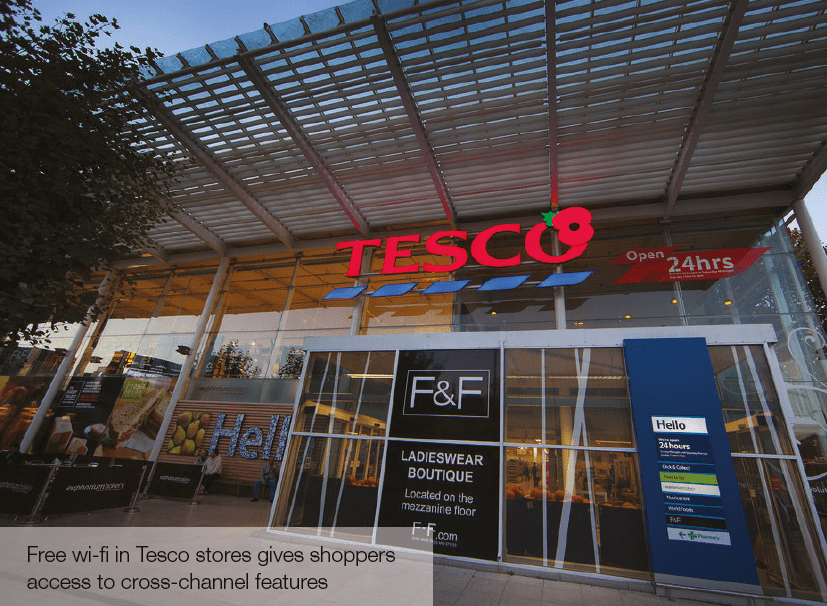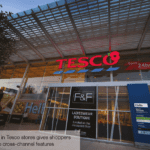How are leading retailers securing cross-channel sales? Chloe Rigby focuses on examples of best practice
7 – Make payment easy
Apple focused on convenient and easy mobile payments when it launched Apple Pay in 2014. Contactless payments happen when the near-field communication (NFC) antenna built into the iPhone 6 is brought close to a contactless payment sensor in the store. That’s safeguarded through Touch ID, a fingerprint security system built into the same model. The system stores credit card details in a tokenised form in a wallet. Owners of the Apple Watch and the iPad Air 2 and iPad mini 3 can also use Apple Pay, the latter through apps.
US shoppers can use Apple Pay to pay in Apple’s own stores, as well at as around 50 retailers, from ToysRUs to Foot Locker and the Disney Store. UK shoppers must wait to be able to use the technology, but Apple Pay is widely expected to launch here later this year.
Non-retailers offering cross-channel payments in the UK include PayPal, offering online payment as well as in-person payment through its mobile apps. Our research unearthed happy customers using Barclays’ contactless payment wristband, while digital wallets and other contactless payment methods are gaining in popularity.
8 – Put the store at the heart of the experience
Thomson’s Holiday Design Stores bring digital into the storeThomson’s Holiday Design Stores bring digital into the store in order to make them places where customers can research and explore potential holiday ideas using digital technology as well as asking questions and advice of staff. Video walls, interactive maps – which have proved one of the most-used features in the digital store – and social media feeds are all part of the mix. Customers can also browse for information through self-service tablet computers or opt for a personal consultation with an assistant. Shortlists of holiday ideas are saved on a wishlist that can be accessed through digital devices away from the store.
“Ultimately we sell dreams,” said Doug Glenwright, general manager for retail transformation at Thomson, speaking ahead of the InternetRetailing Awards 2014. “We do not have a product that customers can feel and touch, so it is incredibly important that we get a clear understanding of what our customers want and also that we bring our products to life in an engaging and exciting way by using rich content and imagery.” Once a holiday is sold, holidaymakers stay informed about their break, from flight times and luggage allowances to weather updates and social sharing through the MyThomson mobile app.
9 – Persistent shopping baskets
When customers who are logged in to the Marks & Spencer website place an item into the shopping basket, that item will still appear in the basket when it’s viewed from another device. Thus, baskets created on a tablet can be checked out from a desktop computer, or those created on a laptop can be seen from the mobile website or an app. It’s a simple but effective multichannel basic that M&S does well.
Virtual baskets that are started in the store through a browse and order point kiosk can be saved to a mobile device when the customer generates and scans a QR code. All of this enables customers to take a start/stop approach to shopping, something that adds to the convenience of shopping online. Meanwhile, those who have signed up to the Marks & Spencer site can also see their account information across devices.
As well as synchronising baskets and personal information across devices, the fashion-to-food multichannel retailer’s app has a barcode scanner. This enables shoppers who can’t find an item of clothing in their size in-store to read the barcode from the same item in a different size and then go online to order the one that will fit them.
10 – Inform shoppers even when the store is closed
Ralph Lauren and Harrods teamed up for a mobile proximity technology campaign that enabled customers to get the information they wanted about the goods on display, even when the store was closed. The luxury fashion retailer took over 15 window displays at the Knightsbridge store in October, displaying QR codes alongside the items in the window.
Shoppers who scanned or tapped the display with their smartphones started up a dedicated landing page in their browser. That page featured an interactive map taking them to the area within Harrods where the new Ralph Lauren Polo for Women range was on show. The QR codes were provided by Proxama, which, using its TapPoint platform, could give Harrods a view of the user journey and campaign analytics, helping both the department store and Ralph Lauren to make sure they were getting the most out of the campaign.
11 – Make it easier to buy
B&Q’s Spaces kitchen design tool enables customers to plan a new-look kitchen at an appointment in-store before saving it as an online project for further refinement at home. The price of the design varies as materials and styles change. “If it’s too expensive or the customer doesn’t want it, they just drag it out and put something else in instead,” said Michael Durbridge, B&Q head of multichannel development and strategy, speaking ahead of InternetRetailing Conference 2014. “It’s a really quick tool that helps customers from the start, where they’re not really sure what they want, through the design process to finding out how much it would cost in about 10-15 minutes, something that would normally take a few days.”
Shoppers can liaise with the member of staff who helped them in-store before generating a list of components to be bought and arranging installation online. “It’s a helpful and collaborative way of helping customers make perhaps one of the biggest decisions they’ll make in their lives,” said Durbridge.
12 – Free wi-fi
Free wi-fi in Tesco stores gives shoppers access to cross-channel featuresRetailers from Tesco and Apple to John Lewis offer free wi-fi to shoppers, who use it to research reviews, check discount offers and compare prices – as well as surfing the internet while they wait to finish their shopping trip. Some retailers have been unsure whether enabling price comparison in their shops is altogether good for their business, but those that have introduced it are using it to remove friction from the in-store shopping trip.
It may seem basic, but free wi-fi underpins many of the cross-channel features we’ve mentioned in this list: apps and beacons used in store, as well as payment from mobile rely on shoppers being able to get broadband access. As 4G comes in, there’ll be more store-based use of 4G but in the meantime free wi-fi enables retailers to connect up sales channels
Click here for a free subscription to Top500 publications, including the current issue in pdf and future reports in print, or .






